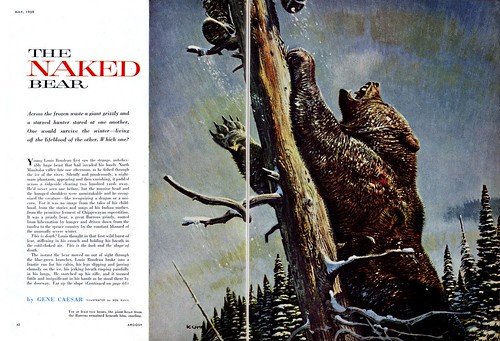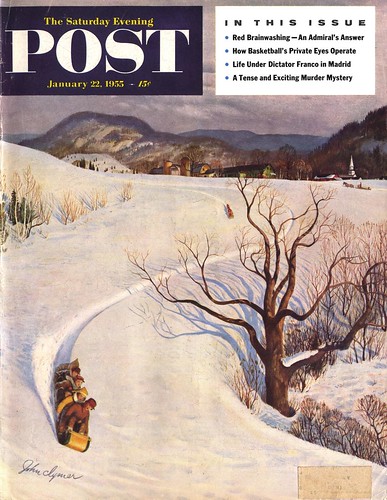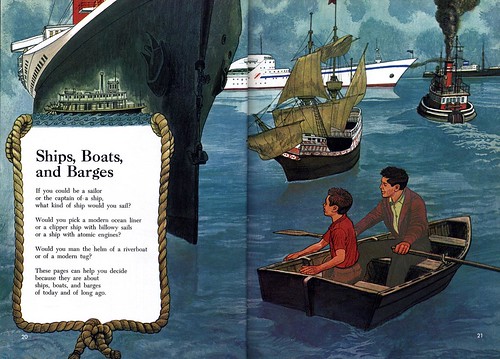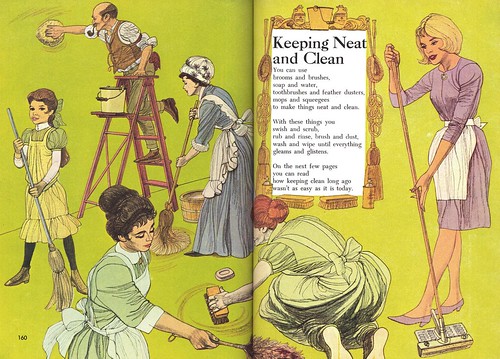"Pop shared a floor above retail space with Robert Kuhn,"

"Walter Skor,"

"John Clymer,"

"and C.E. Monroe (who I don't remember)."

"As you can imagine, it seemed quite normal to hang around these artistic types."
"[After he moved his studio home] Pop stayed in touch with Bob Kuhn, Walter Skor and John Clymer. They were great friends and we visited one another's homes often. Fortunately, the wives all got along, too. And, we kids did have fun with the similarly aged children of the Kuhn's."
"I know, from overhearing my parents talk, that Walter Skor had tremendous trouble promoting himself and had an agent. I think things were harder for him than the others in that respect. He eventually branched out and started doing framing for other artists -- beautiful works of art in their own right. Remember, though, that the art world in New York at that time was a smaller place. I'm pretty sure that all of these guys shared information and passed around ideas and contacts."
"I think that there have always been "starving" artists, and it's the rare and pit bull types that weather the ups and downs and/or pursue other types of work to continue in the career they love."

"Pop was very concerned about the growing tendency by magazines, even in his day, to use photography as a way of illustrating stories."

"He was aware that there was a growing trend that was narrowing the opportunities for the illustrator. I can't remember exactly when I first heard the conversations, but it was probably before I went to Boston University."

"I became acutely aware of Pop's wariness of photography vs illustration when I decided to take a photography course at BU. This was after I left the School of Fine Arts. I had decided to take time out from pursuing a "fine arts" path. I knew it wasn't for me, and quite frankly, I wasn't terribly good. I did learn so much, though, about color and design, but I just didn't like paint. Really. I hated oils in particular."
"Pop really did not like the direction that I was going in, but, really, drawing was very hard for me, and I guess he figured this was better than nothing. But, the disappointment was apparent. We had philosophical discussions about photography vs illustration. Fine art vs illustration. Graphic art vs illustration."

"I do remember that Pop had been doing quite a bit of textbook illustration (for Ginn & Company, I think, and others). This was while I still lived in at home in Connecticut, so that would have been in the late 50s, early 60s. And, he did not enjoy this type of work; very boring."
[Note: the examples show here are from the Childcraft series of textbook/encyclopedias, c. 1964 - Leif]

"Pop told me he "was not a genius" and would never be a superstar like Picasso. He had to earn a living, too, he said, because he liked living a good life, so being an illustrator gave him the best of both worlds."
Jenifer's narrative concludes... tomorrow.
Denver Gillen Flickr set.
Charlie Allen emailed the following comment to me. I'm posting it here with his permission:
ReplyDeleteLEIF....As usual, enjoying this week's blog on Denver Gillen. Never recorded his work or his name on my very busy mind in the 50's. Admire his economy of style, yet getting it done....again proving what you leave out as important as what you put in. Had to learn that the hard way! Also, such a difference of assignments back there, and yet such similarity with deadlines and nature of the biz. Inspirationally speaking, thanks again! Chas.